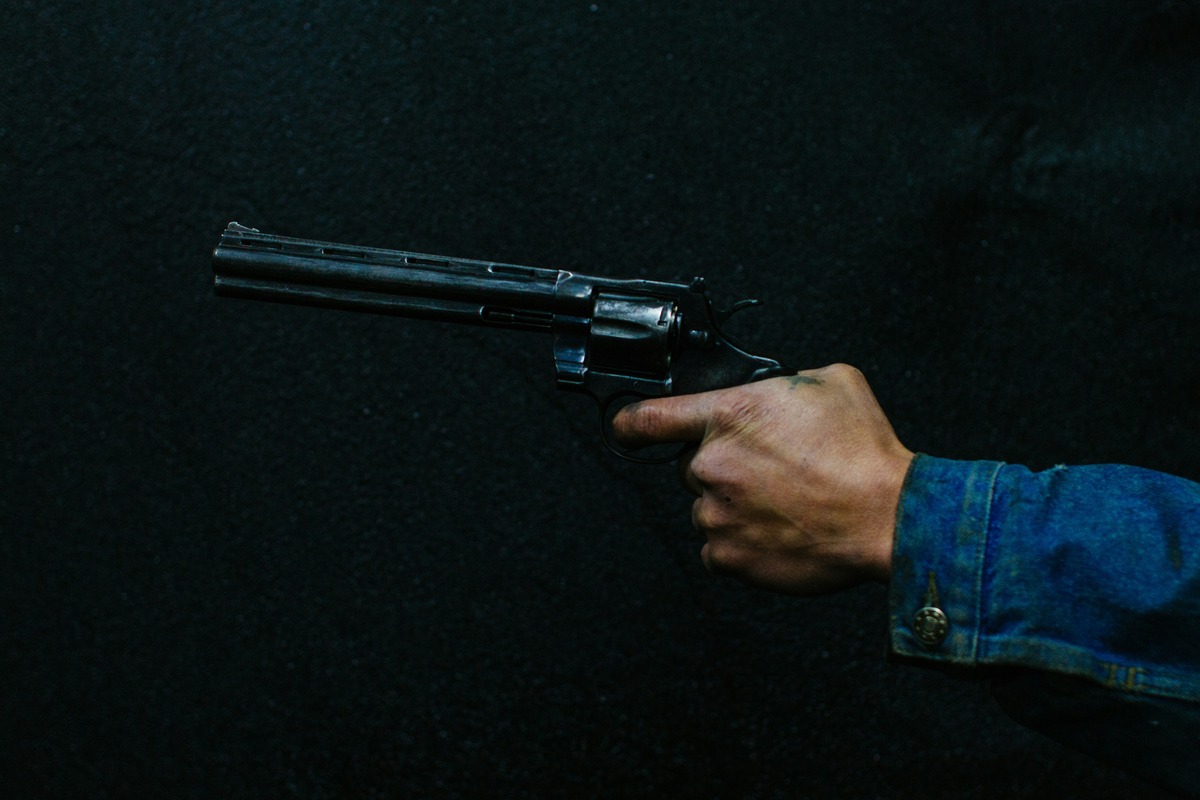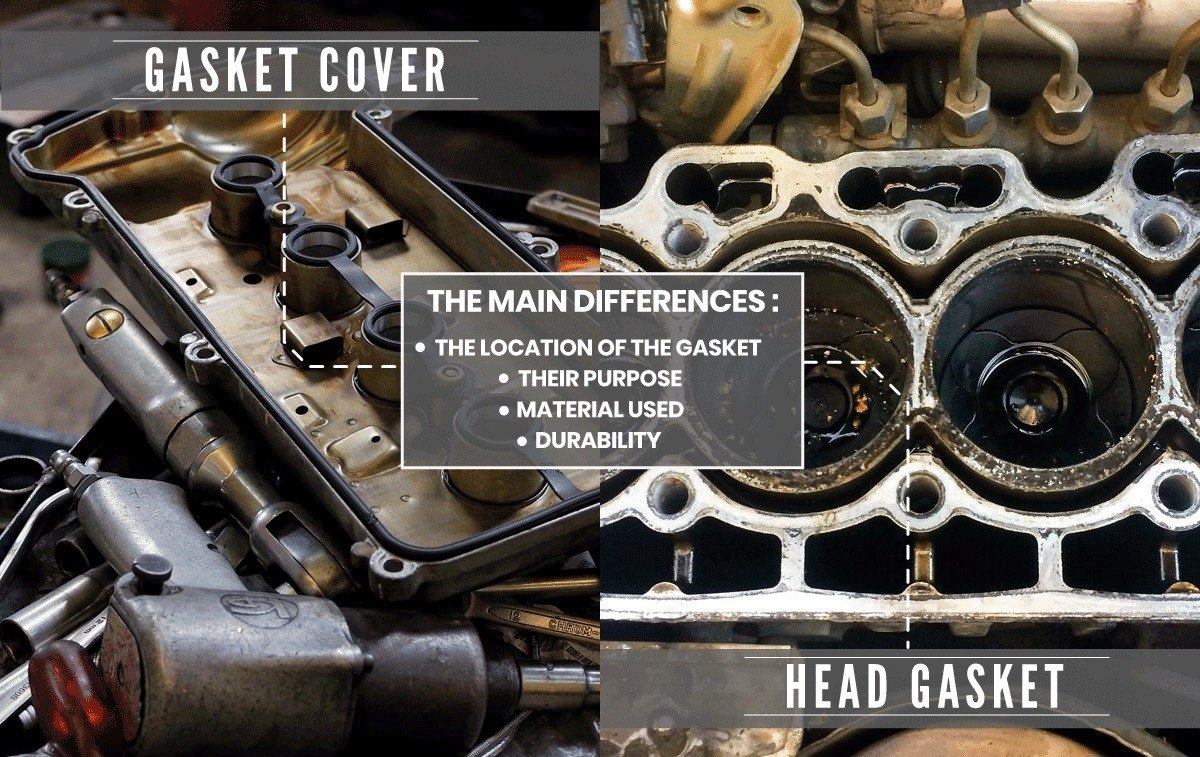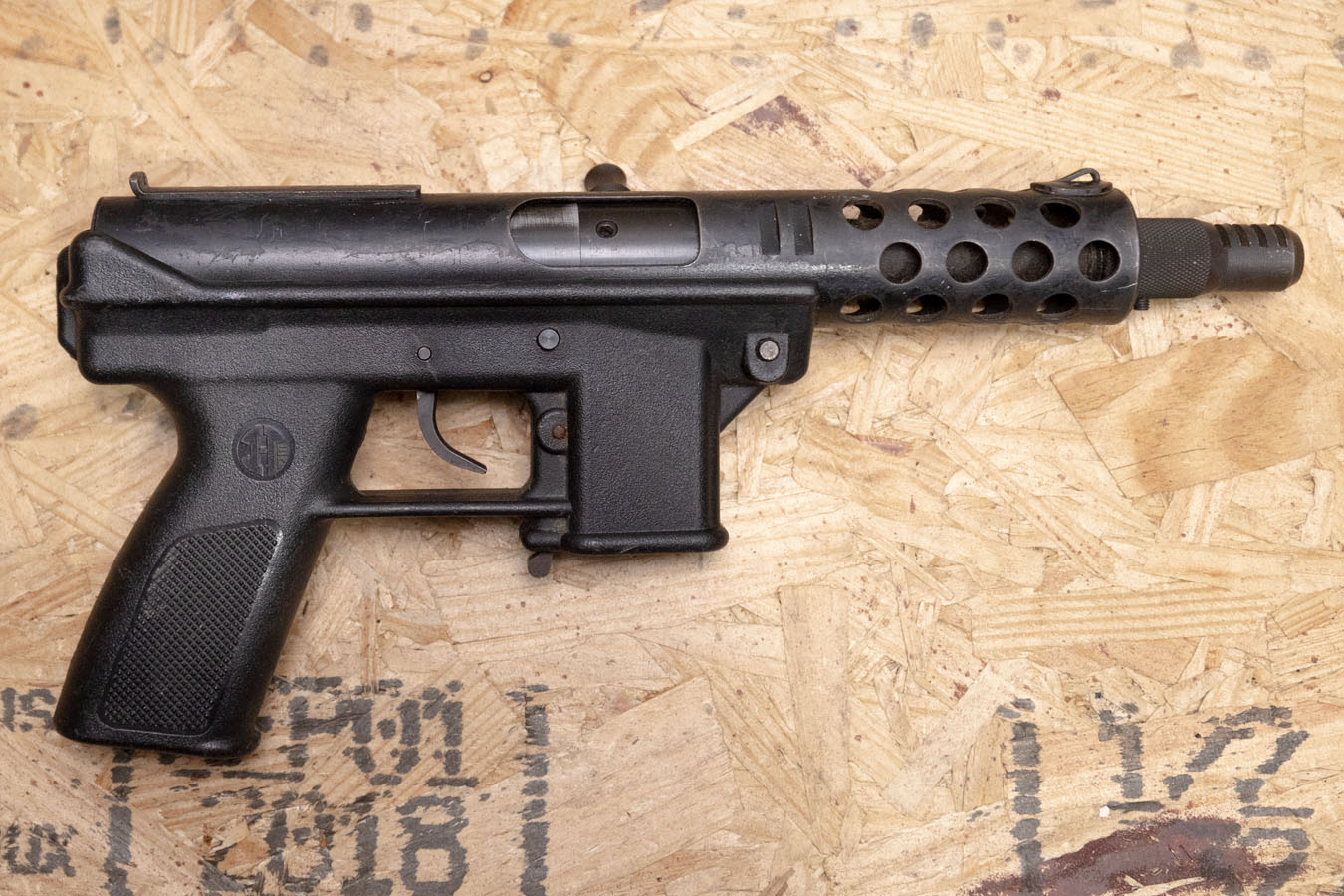Home>Lifestyle>Unveiling The Ultimate Handgun: The Battle Between 40 Cal And 9mm!


Lifestyle
Unveiling The Ultimate Handgun: The Battle Between 40 Cal And 9mm!
Published: February 18, 2024
Discover the best handgun for your lifestyle with our comparison of the 40 Cal and 9mm. Make an informed choice for your self-defense needs.
(Many of the links in this article redirect to a specific reviewed product. Your purchase of these products through affiliate links helps to generate commission for Noodls.com, at no extra cost. Learn more)
Table of Contents
Introduction
When it comes to choosing the perfect handgun, the debate between the 40 Cal and 9mm has sparked fervent discussions among firearm enthusiasts and self-defense advocates alike. Both calibers have their fervent supporters, each touting the advantages of their preferred choice. The decision between the 40 Cal and 9mm handguns is not merely a matter of personal preference; it delves into the realms of ballistics, performance, recoil, capacity, and cost. Understanding the nuances of these two popular calibers is crucial for making an informed decision.
In this comprehensive comparison, we will delve into the intricacies of the 40 Cal and 9mm handguns, shedding light on their historical significance, ballistics, performance, recoil, handling, capacity, size, and cost. By the end of this exploration, you will gain a deeper understanding of these firearms, empowering you to make an educated choice based on your specific needs and preferences. So, let's embark on this journey to unravel the ultimate handgun, pitting the 40 Cal against the 9mm in a battle of supremacy.
History of 40 Cal and 9mm Handguns
The history of the 40 Cal and 9mm handguns is a captivating journey that intertwines with the evolution of firearms and the shifting landscape of law enforcement and civilian firearm preferences.
The 9mm, also known as the 9x19mm Parabellum, has a storied legacy dating back to its inception in the early 1900s. Developed by Georg Luger, the 9mm cartridge gained widespread recognition as the standard issue for military sidearms in numerous countries. Its adoption by the German military during World War I solidified its prominence, and it continued to be a popular choice for military and law enforcement agencies worldwide.
In contrast, the 40 Cal, or .40 Smith & Wesson, emerged in the late 20th century as a response to the limitations of existing law enforcement cartridges. The FBI's 1986 Miami shootout highlighted the deficiencies of the standard-issue 9mm ammunition, prompting a quest for a more potent caliber. This led to the development of the 40 Cal, which offered a balance between the 9mm and the larger .45 ACP, providing enhanced stopping power without compromising capacity or controllability.
The introduction of the 40 Cal addressed the need for a more formidable round, leading to its widespread adoption by law enforcement agencies across the United States. Its trajectory mirrored the shifting demands of law enforcement, where stopping power and penetration became pivotal factors in firearm selection.
As the 40 Cal gained traction in law enforcement circles, the 9mm continued to evolve, with advancements in bullet technology and ballistics enhancing its performance. This led to a resurgence in the popularity of the 9mm among both law enforcement and civilian shooters, as its improved terminal ballistics and manageable recoil offered a compelling combination.
The historical journey of the 40 Cal and 9mm handguns reflects the dynamic nature of firearm development, influenced by real-world scenarios, technological advancements, and the evolving needs of users. Understanding the historical context of these calibers provides valuable insights into their design, performance, and enduring relevance in the realm of handguns.
Ballistics and Performance Comparison
The ballistics and performance of a handgun caliber are pivotal factors that directly impact its effectiveness in real-world scenarios. When comparing the 40 Cal and 9mm, several aspects come into play, including terminal ballistics, penetration, velocity, and energy transfer.
The 40 Cal, with its larger bullet diameter and heavier grain weight, is renowned for its enhanced stopping power. Its terminal ballistics, especially when utilizing modern hollow-point ammunition, deliver formidable performance, making it a compelling choice for self-defense and law enforcement applications. The 40 Cal's ability to create larger wound channels and deeper penetration contributes to its reputation as a potent defensive round.
On the other hand, the 9mm has undergone significant advancements in bullet design and terminal performance. With innovations such as bonded bullets and advanced hollow-point designs, the 9mm has narrowed the gap in terminal ballistics, delivering impressive expansion and penetration. The higher velocity of the 9mm round contributes to its energy transfer upon impact, making it a formidable contender in terms of stopping power.
When assessing the performance of these calibers, factors such as recoil management and follow-up shot capability come into play. The 9mm, known for its manageable recoil and faster follow-up shots, offers a distinct advantage in scenarios requiring multiple rounds to neutralize a threat. Its lighter recoil allows for quicker sight realignment, enabling shooters to maintain accuracy and control during rapid fire.
In contrast, the 40 Cal, while exhibiting more pronounced recoil, provides a reassuring sense of authority with each shot. The perceived recoil of the 40 Cal, often described as a "push" rather than a sharp snap, can be manageable with proper training and technique. This characteristic, coupled with its formidable terminal ballistics, appeals to those seeking a balance between stopping power and controllability.
In real-world scenarios, shot placement and ammunition selection play a crucial role in determining the effectiveness of a handgun caliber. Both the 40 Cal and 9mm offer compelling performance, with the 40 Cal excelling in delivering decisive stopping power and the 9mm showcasing commendable terminal ballistics and controllability.
The ballistics and performance comparison between the 40 Cal and 9mm underscores the nuanced dynamics of handgun calibers, where a delicate balance between terminal effectiveness, recoil management, and shot placement influences the decision-making process for firearm selection. Understanding these intricacies empowers individuals to make informed choices based on their specific needs and preferences.
Recoil and Handling
Recoil and handling are pivotal considerations when evaluating the performance and usability of a handgun. The interplay between these factors directly influences a shooter's ability to maintain control, achieve accurate shot placement, and effectively manage follow-up shots.
In the realm of recoil, the 40 Cal and 9mm handguns exhibit distinct characteristics that shape the shooting experience. The 40 Cal, known for its robust stopping power, typically generates a more pronounced recoil impulse compared to the 9mm. This can be attributed to the 40 Cal's larger bullet diameter and heavier grain weight, resulting in increased muzzle flip and perceived kick upon firing. However, with proper grip technique and recoil management, shooters can effectively mitigate the recoil of the 40 Cal, allowing for controlled and accurate shooting.
On the other hand, the 9mm is celebrated for its manageable recoil, offering a balanced combination of controllability and effectiveness. The lighter recoil of the 9mm facilitates quicker sight realignment and faster follow-up shots, enabling shooters to maintain accuracy and target engagement with minimal disruption. This characteristic makes the 9mm an appealing choice for individuals seeking a caliber that strikes a harmonious balance between stopping power and recoil management.
When it comes to handling, the ergonomic design of a handgun significantly influences its usability and shooter comfort. The grip size, angle, and texture play a crucial role in ensuring a secure and comfortable hold, ultimately impacting the shooter's ability to maintain control and deliver precise shots. Both the 40 Cal and 9mm handguns are available in a diverse range of firearm models, each offering unique grip designs tailored to accommodate varying hand sizes and preferences.
Furthermore, the weight distribution and overall ergonomics of the handguns contribute to their handling characteristics. A well-balanced handgun with intuitive controls and a comfortable grip fosters a seamless shooting experience, allowing users to effectively manage recoil and maintain control during rapid fire sequences.
In the realm of self-defense and law enforcement, the handling of a handgun holds immense significance, as it directly influences an individual's ability to react swiftly and decisively in high-pressure situations. The 40 Cal's authoritative feel and robust handling appeal to those seeking a sense of confidence and reassurance in their firearm, while the 9mm's balanced recoil and user-friendly handling cater to individuals prioritizing controllability and rapid target re-engagement.
In essence, the interplay between recoil and handling underscores the nuanced dynamics of firearm selection, where individual preferences, shooting proficiency, and intended applications converge to shape the choice between the 40 Cal and 9mm handguns. Understanding the intricacies of recoil management and handling empowers shooters to make informed decisions aligned with their specific needs and shooting preferences.
Capacity and Size
The comparison between the 40 Cal and 9mm handguns extends beyond ballistics and performance to encompass the critical aspects of capacity and size. These factors play a pivotal role in shaping the practicality and versatility of a handgun, directly impacting its suitability for various applications, including self-defense, concealed carry, and law enforcement use.
In terms of capacity, the 9mm holds a distinct advantage, typically offering a higher ammunition capacity compared to the 40 Cal. The relatively smaller size of the 9mm cartridge allows firearm manufacturers to design handguns with increased magazine capacity, enabling shooters to carry more rounds without compromising the overall size and weight of the firearm. This enhanced capacity is particularly advantageous in scenarios where a greater number of rounds may be required to address multiple threats or prolonged engagements.
Conversely, the 40 Cal, with its larger and more potent cartridge, often entails a trade-off in terms of magazine capacity. The broader dimensions of the 40 Cal round necessitate slightly reduced magazine capacity in most handgun designs when compared to their 9mm counterparts. While this may result in a marginally lower ammunition capacity, the 40 Cal compensates with its formidable stopping power, appealing to individuals prioritizing terminal effectiveness over sheer round count.
When evaluating the size of the handguns, considerations such as overall dimensions, weight, and ergonomics come into play. The 9mm handguns, renowned for their compact and lightweight designs, offer enhanced concealability and comfortable carry, making them well-suited for everyday carry (EDC) and concealed carry applications. The smaller size and reduced weight of 9mm firearms contribute to their ease of concealment, allowing individuals to carry them discreetly without sacrificing firepower.
In contrast, the 40 Cal handguns, while slightly larger and heavier than their 9mm counterparts, offer a reassuring heft and robust construction. The additional size and weight of the 40 Cal firearms contribute to enhanced recoil management and a substantial feel in hand, instilling a sense of confidence and control during shooting. While the larger dimensions of the 40 Cal handguns may pose challenges for concealed carry, they excel in scenarios where a full-sized firearm with potent stopping power is desired.
The interplay between capacity and size underscores the nuanced trade-offs inherent in firearm selection. The 9mm's higher ammunition capacity and compact size cater to individuals prioritizing versatility and concealability, while the 40 Cal's formidable stopping power and robust construction appeal to those seeking uncompromising terminal effectiveness and authoritative handling.
Understanding the implications of capacity and size empowers individuals to make informed decisions aligned with their specific needs, whether it involves everyday carry, home defense, or duty use. By considering these factors in conjunction with other aspects of handgun performance, shooters can navigate the diverse landscape of firearm options to find the perfect balance of capacity, size, and effectiveness.
Cost and Availability
The consideration of cost and availability plays a pivotal role in the decision-making process when selecting a handgun. Both the 40 Cal and 9mm handguns exhibit distinct cost and availability dynamics, influenced by factors such as ammunition pricing, firearm options, and market demand.
In terms of ammunition cost, the 9mm holds a notable advantage, often being more affordable compared to the 40 Cal. The widespread adoption of the 9mm cartridge, coupled with its smaller size and lower material requirements, contributes to its cost-effectiveness. This affordability extends to both practice ammunition and defensive rounds, making the 9mm an appealing choice for individuals seeking an economical yet capable handgun caliber.
Conversely, the 40 Cal ammunition, while offering formidable performance, tends to command a slightly higher price point. The larger bullet diameter and heavier grain weight of the 40 Cal round contribute to its relatively higher manufacturing costs, reflecting in the pricing of both target and self-defense ammunition. This cost differential is an important consideration for individuals who engage in frequent range practice or seek to maintain a substantial supply of defensive ammunition.
Availability also plays a crucial role in the handgun selection process, as the consistent availability of ammunition is essential for regular practice and preparedness. The 9mm, being one of the most widely produced and utilized handgun calibers globally, enjoys robust availability across a diverse range of manufacturers and retailers. This widespread availability ensures a steady and reliable supply of 9mm ammunition, mitigating concerns related to shortages or limited purchasing options.
In contrast, the 40 Cal, while enjoying significant popularity, may exhibit slightly lower availability compared to the ubiquitous 9mm. The specialized nature of the 40 Cal cartridge, coupled with its specific market demand, can result in occasional fluctuations in availability, particularly during periods of heightened consumer purchasing or industry shifts. While the 40 Cal remains readily accessible in most regions, shooters may encounter occasional variances in pricing and stock levels.
The cost and availability dynamics of the 40 Cal and 9mm handguns underscore the multifaceted nature of firearm selection, where considerations such as ammunition pricing, supply consistency, and market demand converge to shape the decision-making process. Understanding these nuances empowers individuals to make informed choices aligned with their budgetary constraints and accessibility requirements, ensuring a seamless and sustainable shooting experience.
In essence, the interplay between cost and availability serves as a critical factor in the broader landscape of handgun selection, influencing the practicality, affordability, and long-term viability of firearm ownership. By carefully evaluating these aspects alongside other considerations, shooters can navigate the diverse array of handgun options to find the perfect balance of cost-effectiveness and ammunition accessibility.
Conclusion
In the realm of handgun selection, the choice between the 40 Cal and 9mm handguns embodies a multifaceted decision-making process, influenced by a diverse array of factors ranging from ballistics and performance to recoil, capacity, cost, and availability. This comprehensive comparison has shed light on the nuanced dynamics of these two popular calibers, providing valuable insights for individuals seeking to make an informed and tailored choice based on their specific needs and preferences.
The historical significance of the 40 Cal and 9mm handguns reflects the evolution of firearm technology and the shifting landscape of law enforcement and civilian firearm preferences. From the 9mm's storied legacy dating back to the early 1900s to the 40 Cal's emergence as a response to the limitations of existing law enforcement cartridges, the historical context underscores the enduring relevance and adaptability of these calibers in the modern firearms landscape.
The ballistics and performance comparison has highlighted the distinctive attributes of the 40 Cal and 9mm, showcasing their respective strengths in terminal ballistics, recoil management, and shot placement. While the 40 Cal excels in delivering formidable stopping power and penetration, the 9mm offers commendable terminal ballistics and controllability, catering to diverse shooting preferences and applications.
Recoil and handling emerged as pivotal considerations, emphasizing the interplay between shooter comfort, controllability, and firearm usability. The 40 Cal's authoritative feel and robust handling appeal to those seeking a sense of confidence and reassurance, while the 9mm's balanced recoil and user-friendly handling cater to individuals prioritizing controllability and rapid target re-engagement.
The comparison of capacity and size underscored the trade-offs inherent in firearm selection, with the 9mm offering enhanced ammunition capacity and compact size, ideal for concealed carry and everyday use, while the 40 Cal's formidable stopping power and robust construction cater to scenarios where terminal effectiveness and authoritative handling take precedence.
Cost and availability dynamics further enriched the comparison, providing insights into the economic and logistical aspects of firearm ownership. The 9mm's affordability and widespread availability positioned it as an economical and accessible choice, while the 40 Cal's slightly higher ammunition cost and occasional availability fluctuations underscored the importance of long-term ammunition sustainability.
In conclusion, the decision between the 40 Cal and 9mm handguns transcends a mere choice of caliber; it embodies a personalized journey of aligning firearm attributes with individual preferences, shooting applications, and practical considerations. By delving into the intricacies of these calibers, individuals can navigate the diverse landscape of handgun options, ultimately finding the perfect balance of performance, usability, and suitability for their unique needs.














